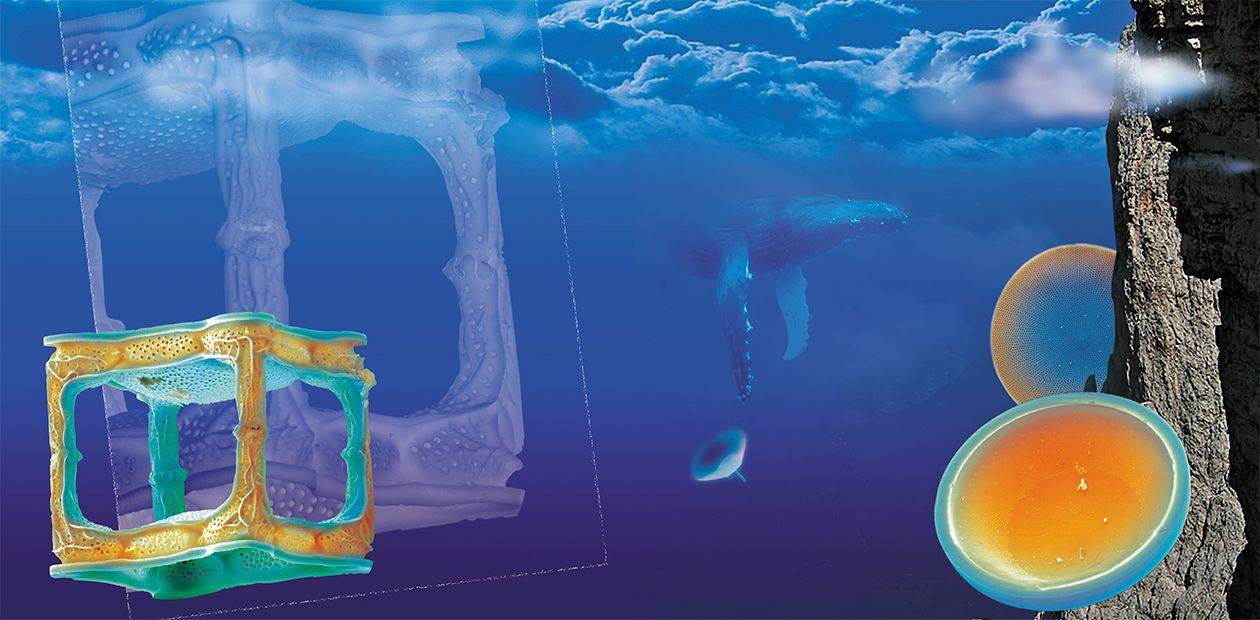Diatoms: Creators of Glass Castles
Almost 300 years ago the Dutchman Anton van Leeuwenhoek created a model of microscope with 300-fold magnification and saw a strange brownish “boat” crawled in the slide. He called it the “oat animal”
It would be fair to say that every other breath of oxygen that we breathe comes from diatoms, those invisible workers
In this sense the frustule structure of many diatoms is perfect from the point of view of an engineer and designer
R. CRAWFORD: At some early stage in their evolution more than 200 million years ago the diatoms established the ability to metabolize silica, abundant in their surrounding environment, and to use it to build their cell walls from silica — the second chemical element of natural occurrence after oxygen whose content in the earth’s crust reaches 30 %. Other groups (Spongia, Radiolaria, mollusca, horse-tails, etc.) both autotrophic and heterotrophic also use the element in different ways but none has shown such a flowering of diversity based on such a simple theme.
Today this group of unicellular plants is supremely successful and there is scarcely any wet place on earth where diatoms of one kind or another cannot be found. In terms of amount of silica produced if not in cell numbers, they appear to have been more abundant in the geological past when silica was dissolved in the water at much higher overall concentrations than it is today yet they remain among the major primary producers in lakes, rivers and oceans. As consumers of 20-25% of the worlds CO2 they are thus of major significance for the study of our present climate. Because their cell walls are readily preserved and because they settle to the bottom of a lake or ocean after death, they can be preserved in such numbers in the sediment that they can tell us the story of the water body in which they grew and in what sequence and where they may have evolved.
Our knowledge of the diatoms today has accumulated to the point where something like 200,000 species have been described from every corner of the globe. Countless descriptions have been made by workers who have largely been concentrated in Europe (including Russia), and North America, although Japan has been very active in recent decades. As workers examined the samples that they themselves collected or were sent by colleagues they left reference slides, material and publications as a record of their work. These are preserved with varying degrees of completeness in museums and institutions throughout the world. Major collections from the 19th century can be found in Berlin, Vienna, Antwerp, Stockholm, Edinburgh, London, Philadelphia and although so very old, their slides and samples are still being studied today. Few other groups of organisms have such a source of knowledge.
This happy combination of a cell wall that can be preserved after chemical cleaning of organic material and a seemingly endless, species-specific diversity has resulted in a biological classification based for 200 years on the cell wall morphology. Perhaps we have been too much preoccupied with the cell walls themselves as a result because the physiology, biochemistry and life cycles of the species vary too and it is now becoming clear that they do so to a much greater degree than has been imagined. Macro- and micro-processes of diatom morphogenesis are receiving special attention today because of their potential in nanotechnology.
Perhaps a more significant question is “how important are the diatoms?” Clearly they play an immense role in all kinds of aquatic systems of the world from sea-ice communities at the poles to the Mangrove ecosystems of the tropics, from the freshest upland stream to the salty ocean plankton. No other answer should be needed. Nevertheless, many materials of our focus are dedicated to the problems of “scientific” and practical application of this remarkable group of organisms. However, besides utilitarian considerations, simply contemplating such perfect creatures of Nature brings incomparable aesthetic pleasure, and an account of their cell biology featuring movement of live cells is breathtaking*.
*See films of J. Pickett-Heaps and www.cytographics.com.













